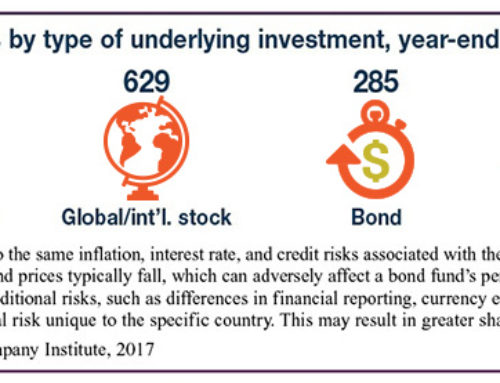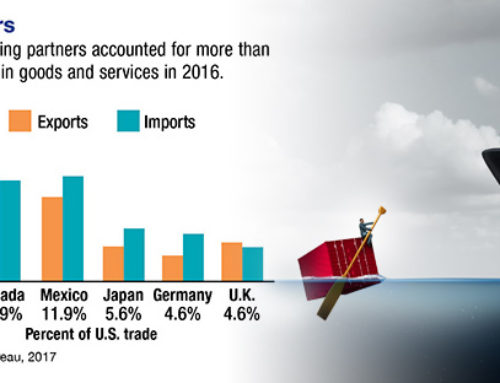The U.S. stock market has been unusually calm in 2017, while gradually trending upward. Through July 28, 2017, the S&P 500 gained or lost 1% or more on just four trading days. By contrast, over the same period in 2016, there were 39 such days, with gains or losses of 2% or more on seven days.1
A common measure of U.S. stock volatility — the CBOE Volatility Index, or VIX — closed on July 14 at its lowest level since 1993.2 The VIX reflects anticipated volatility over the coming 30 days, so its historic low suggests that traders expect the current calm to continue in the short term. It’s not possible to predict the market, but in general, the VIX has tended to overestimate rather than underestimate actual volatility.3
The lack of volatility has extended to global markets. For the first time since 1993, the three major benchmark stock indexes for the United States, Europe, and Asia — the S&P 500, the MSCI Europe, and the MSCI Asia-Pacific ex-Japan — entered mid July without dropping at least 5% from peak to trough.4 (A drop of 5% is considered a pullback; a drop of 10%, which last occurred in the United States in 2015, is considered a correction.5)
Why has the market been so calm? Will it stay that way? And what, if anything, should you do as an investor?
Strength or Weakness?
Market analysts offer a variety of reasons for the current calm. But the same factors that have calmed the markets could lead to increased volatility.
Monetary policy. Although the Federal Reserve has started to raise interest rates, and other central banks have signaled a tightening of monetary policy, market reaction has been muted, perhaps because the moves have long been expected and communicated in advance. Continued low inflation here and abroad makes it unlikely that the banks will take a more aggressive approach.6 However, the market seems to be downplaying the Fed’s resolve, and it’s not known what will happen when the central bank begins to unwind its bond-buying program, tightening the money supply.7
Earnings and prices. Improved corporate earnings have contributed to the stable upward trend, but stock prices have outpaced earnings, making the market expensive. The S&P 500 forward P/E ratio — the ratio of stock prices to projected corporate earnings over the next 12 months — was 17.7 on July 28, 2017, well above the 10-year average of 14.0.8 Corporate debt is also high, with low interest rates and high stock prices encouraging borrowing.9
Oil and geopolitics. Oil and gas prices have been roughly balanced, with oil just high enough to help states and countries that depend on it, and gas low enough to help consumers. It’s generally expected that oil prices will rise over the next few months, which may affect consumers. Geopolitical threats and Trump administration domestic and foreign policies remain uncertain.10
Trading dynamics. Quantitative trading and passive investing strategies have helped to dampen volatility.11 However, risk-based strategies and automatic trading could accelerate and exaggerate volatility if and when they begin; i.e., volatility could trigger selling and more volatility.12
A Long-Term View
When stock prices are rising steadily, it’s easy to become complacent and expect the good times to continue. But history suggests this is unrealistic. Market trends tend to revert to the mean, so it’s likely the market will become more volatile in the not-too-distant future. Historically, August is the most volatile market month, followed by a rocky September and October.13
The larger question is whether volatility will lead to a reversal of the general upward trend, and history suggests there will be setbacks. The current bull market, which began in March 2009, is now the second longest in history, exceeded only by the bull that ran from 1987 to 2000.14 (A bull market is the upward-trending period between bear markets. A bear market is generally defined as a downturn of 20% or more.)
After a long bull run, many investors may become overexposed to stocks because they “jumped on the bandwagon” or simply because their stocks have risen in value compared with other investments. A period of low volatility can be an appropriate time to gauge whether your portfolio still reflects your goals, time horizon, and risk tolerance. Considering the bull/bear market dichotomy, it might be helpful to ask yourself whether you would be comfortable with the impact of a 20% drop in the market. There’s nothing to suggest that a drop is coming soon; in fact, there is no way to predict when the next bear market will begin. But it may be easier to think clearly during a period of relative calm.
The S&P 500 index is an unmanaged group of securities that is considered to be representative of the U.S. stock market in general. The performance of an unmanaged index is not indicative of the performance of any specific security; individuals cannot invest directly in an index. Asset allocation is a method used to help manage risk; it does not guarantee a profit or protect against investment loss.
All investments are subject to market fluctuation, risk, and loss of principal. Shares, when sold, may be worth more or less than their original cost. Investing internationally carries additional risks, such as differences in financial reporting, currency exchange risk, as well as economic and political risk unique to the specific country. This may result in greater share price volatility.






Leave A Comment